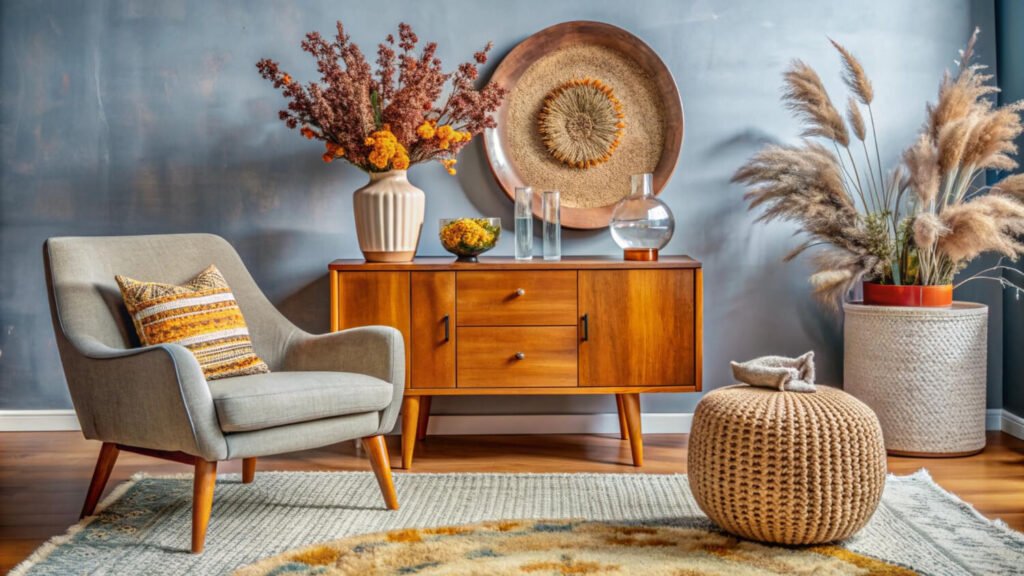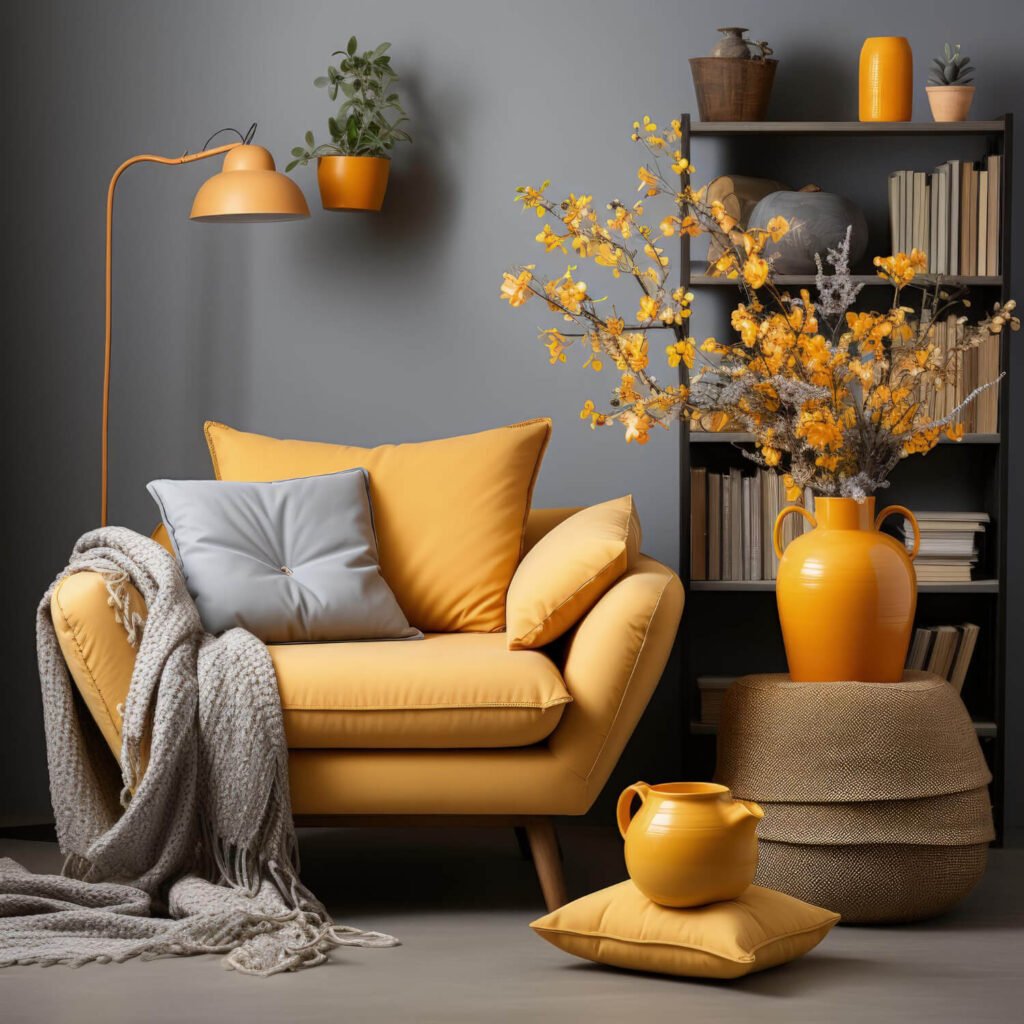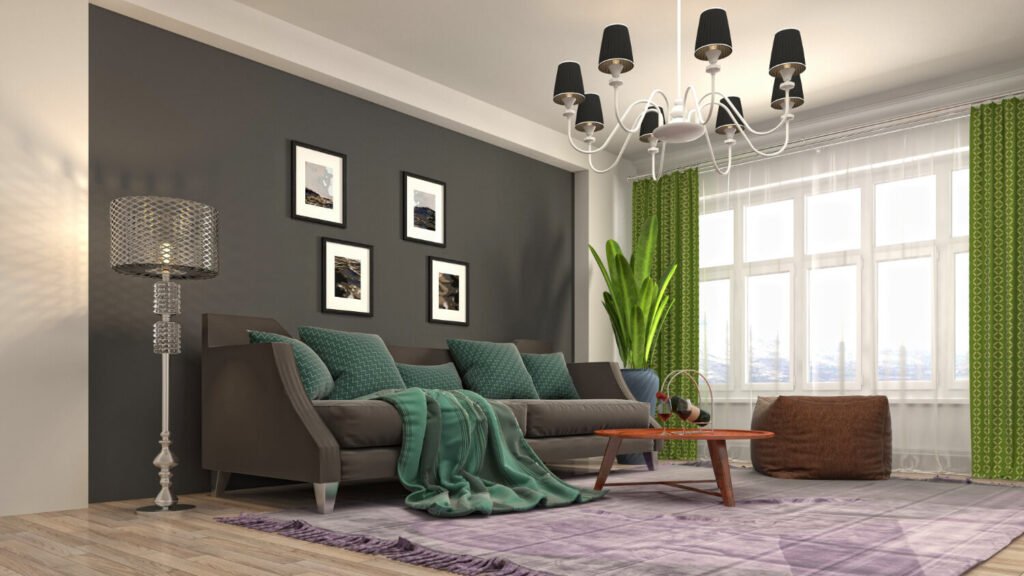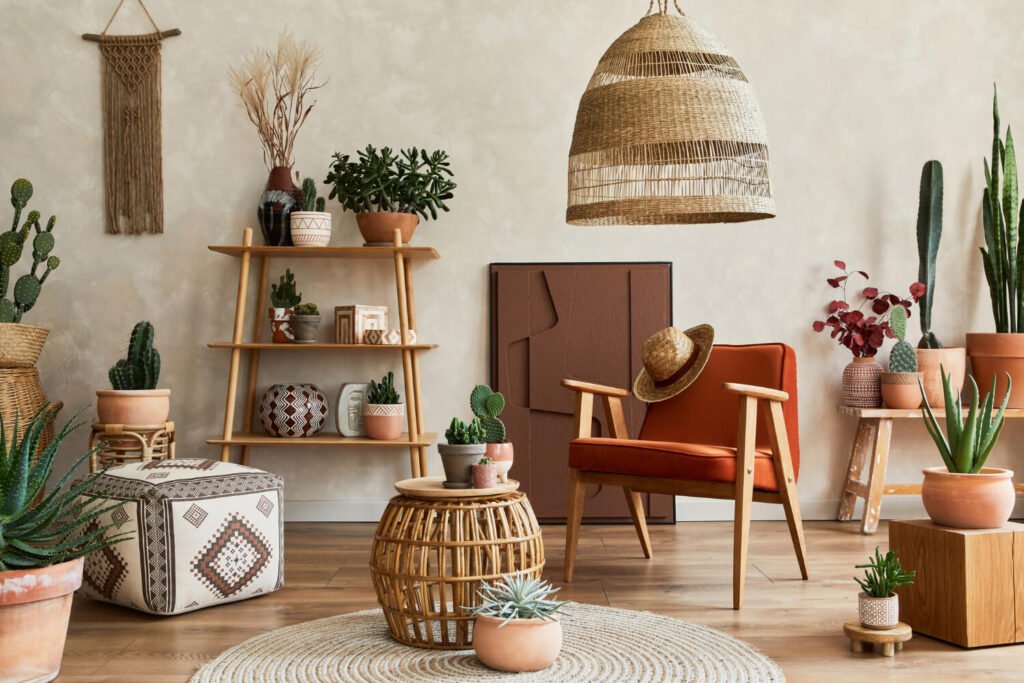Ever wondered how you can breathe new life into your home and garden? Transforming your spaces doesn’t have to be overwhelming or expensive. With a few creative tweaks, you can make your home and garden more inviting and functional.
From adding vibrant plants to rearranging furniture, small changes can make a big difference. You’ll discover practical ways to revamp your home and garden that suit any budget or style.
Whether you’re a DIY enthusiast or just looking for quick fixes, these tips will help you create the perfect sanctuary right in your backyard. Ready to get started? Dive into our guide and find out how simple it is to elevate your living spaces today.
Trending Ways To Revamp Your Home: Quick Facts
- Stay Updated with Trends: Embrace new home and garden trends to keep your space modern and stylish. Look for inspiration in design magazines and online platforms.
- Make It Personal: Customize your home and garden to reflect your personality and preferences. Use unique decor, family heirlooms, or DIY projects to add a personal touch.
- Think Sustainable: Incorporate sustainable practices and materials in your home and garden revamp. Opt for eco-friendly products, recycle, and use energy-efficient appliances.
- Bring the Outdoors In: Integrate natural elements like plants, stones, or wood into your indoor spaces to create a calming atmosphere and improve air quality.
- Revamp Your Garden: Plan your garden layout carefully, choosing plants that thrive in your climate. Consider adding features like water elements, seating areas, or vegetable patches.
- Accessibility Matters: Ensure your home and garden are accessible for everyone by incorporating ramps, wide pathways, and raised garden beds.

Embracing New Trends
Upcoming Decor Shifts
New home trends are emerging for the upcoming year. Expect to see more sustainable and eco-friendly materials in home decor. People are choosing items made from recycled or natural materials.
Technology is also shaping design choices. Smart home devices like thermostats and lighting systems are becoming standard. These gadgets make homes more efficient and modern.
Embracing Warm Colors
Warm colors can transform a space. They create a cozy and inviting atmosphere. Shades like red, orange, and yellow can lift your mood.
To integrate warm colors, start small. Use throw pillows, rugs, or wall art. Gradually add larger pieces like furniture or accent walls.
Popular color palettes include earthy tones mixed with bright accents. This combination adds depth and interest to any room.
Mixing Metals Artfully
Mixing metals can add sophistication to your home. Combine different finishes like brass, chrome, and copper carefully. This creates a balanced look.
For a modern style, pair cool metals like silver with warmer ones like gold. Traditional styles benefit from combining bronze with nickel.
Use mixed metals in kitchens and bathrooms for a striking effect. Light fixtures and hardware are good places to start.
Fun in Design
Adding whimsical elements makes spaces unique. Consider playful touches like patterned wallpaper or quirky decor items.
Children’s rooms are perfect for fun designs. Use bright colors and imaginative themes. Common areas can also benefit from playful accents without losing elegance.
Maintain balance by mixing fun elements with classic pieces. This ensures your space remains stylish yet personal.

Personalizing Your Space
Custom Home Styles
Start by defining your personal home design. Think about colors, textures, and themes that resonate with you. Consider custom furniture to suit your taste. Bespoke design elements add a unique touch to your space.
Mixing styles can create a personalized look. Blend modern and rustic elements for a cozy feel. Combine vintage pieces with contemporary decor for an eclectic vibe. Personalized decor enhances the charm of your home.
Vintage Decor Revival
Vintage trends are making a comeback. Look for mid-century modern furniture or retro lighting fixtures. These pieces add character to any room.
rcing authentic vintage items can be fun. Visit flea markets or antique shops for unique finds. Repurposing old furniture is also sustainable. Vintage decor reduces waste and adds history to your home.
Fluted Details Rise
Fluted textures are popular in contemporary design. They add depth and interest to any surface. Consider fluted details in your furniture, walls, or accessories.
Incorporate fluted designs in various rooms. Use fluted panels for a statement wall in the living room. Add fluted legs to tables or chairs for subtle elegance. Fluted details fit well in both traditional and modern settings.
Spa-Like Bathrooms
Creating a tranquil bathroom environment is essential. Natural stone, plants, and soft lighting can transform your bathroom into a spa-like retreat.
Select fixtures and finishes carefully. Choose rain showerheads for a luxurious feel. Opt for soft, neutral colors to enhance relaxation. Adding spa-like elements makes your bathroom a peaceful oasis.
Sustainable and Accessible Living
Eco-Friendly Decor
Choosing sustainable materials is crucial. Opt for furniture made from reclaimed wood or bamboo. These materials are renewable and reduce environmental impact. Look for eco-friendly decor items at local thrift stores or online marketplaces.
Reducing your carbon footprint can be simple. Use low-VOC paints and finishes. They emit fewer harmful chemicals. Consider energy-efficient lighting like LED bulbs. These choices help the environment and save on energy bills.
Design for Everyone
Universal design principles make homes accessible to all. Install grab bars in bathrooms. Use lever handles instead of knobs for easier grip. These changes benefit people of all ages and abilities.
Smart home technology enhances accessibility. Voice-controlled systems can operate lights, thermostats, and security features. This makes daily tasks easier for everyone in the household.
Versatile Kitchen Updates
You don’t need a full remodel to update your kitchen. Replace old cabinet hardware with modern designs. Add a fresh coat of paint to cabinets for a new look. These small changes improve both functionality and aesthetics.
Smart appliances streamline cooking and cleaning. Consider a smart oven that preheats remotely or a refrigerator that tracks expiration dates. Organizational systems like pull-out shelves maximize space and keep items within reach.
Maximizing Spaces
Small spaces can feel larger with the right strategies. Use light colors on walls to create an open feel. Mirrors reflect light and give the illusion of more space.
Multi-purpose furniture is key in compact areas. A sofa bed provides seating by day and sleeping space by night. Built-in storage solutions, like under-bed drawers, keep clutter out of sight.
Decluttering is essential for minimalist design. Keep only what you need and love. This approach makes your home more functional and visually appealing.

Bringing Nature Inside
Indoor Plant Incorporation
Indoor plants improve air quality and wellbeing. They filter toxins and produce oxygen. Adding plants can reduce stress and enhance mood.
Choose the right plants for your space. Low-light areas suit plants like snake plant or pothos. Bright spots favor succulents and fiddle leaf figs.
Display plants creatively. Use hanging baskets in the living room. Place small pots on shelves or window sills. Group plants of different heights for visual interest.
Nature-Inspired Themes
Nature-inspired design elements have a calming effect. Textures, colors, and materials mimic the outdoors, creating a serene atmosphere.
Use natural textures like wood and stone in your decor. Choose earthy colors such as greens, browns, and blues. These hues evoke a sense of peace.
Incorporate thematic decor that resembles natural landscapes. Use photos of forests or beaches as wall art. Opt for furniture made from sustainable materials like bamboo.
Expanding Outdoor Gardens
Design outdoor spaces for relaxation and entertainment. Create seating areas with comfortable furniture. Add lighting to enjoy the garden at night.
Edible gardens are becoming popular. Grow herbs, vegetables, and fruits in your garden. This trend supports sustainable living practices.
Select plants that thrive in your local climate conditions. Native species are often easier to care for and more resilient. They attract local wildlife, adding to your garden’s appeal.

Garden Revamp Strategies
Understanding Seasons
Adapting home and garden decor to reflect seasonal changes can be exciting. You can start by switching out cushions, rugs, and throws in your living spaces to match the season’s colors. For example, use warm tones in autumn and bright hues in spring.
Creating a seasonal planting schedule keeps your garden interesting all year. Plant bulbs like tulips in autumn for spring blooms. In summer, plant sunflowers and marigolds. This way, you have continuous garden interest.
Bringing seasonal colors into home decor is simple. Use flowers from your garden to make fresh arrangements. Add seasonal fruits in bowls as centerpieces. These small touches keep your home lively.
Gardening Goals
Setting achievable gardening goals depends on your space, time, and skill level. If you have limited space, consider container gardening. Allocate a few hours weekly for gardening if you have a busy schedule.
Gardening benefits mental health by reducing stress. It also helps build community when shared with neighbors. Organize a garden club to connect with others who share your interests.
Starting a garden project involves planning and execution. Begin by sketching your garden layout. Choose plants that suit your climate and soil type. Gather necessary tools and materials before you start planting.
Planting Schedule
A basic guide for seasonal planting ensures year-round interest in your garden. In spring, plant cool-season vegetables like lettuce and peas. Summer is ideal for tomatoes and peppers. Fall is perfect for root vegetables like carrots.
Understanding plant hardiness zones is crucial for successful gardening. These zones indicate which plants will thrive in your area based on temperature ranges. Check the USDA Hardiness Zone Map to find your zone.
Succession planting and crop rotation are essential for vegetable gardens. Succession planting involves planting crops at intervals to ensure continuous harvests. Rotate crops yearly to prevent soil depletion and reduce pests.
Garden in 2024
Upcoming trends in garden design for 2024 include vertical gardens and edible landscapes. Vertical gardens save space and add greenery to walls. Edible landscapes combine beauty with functionality by incorporating fruit trees and vegetable plants into decorative designs.
Technology integration is growing in gardening. Smart irrigation systems help conserve water by delivering precise amounts needed by plants. Use apps to monitor soil moisture levels and weather forecasts.
There is increasing interest in native plants and wildlife-friendly gardens. Native plants support local ecosystems by providing food and shelter for wildlife. Create habitats for birds, bees, and butterflies by including diverse plant species.
Final Note
Revamping your home and garden isn’t just about aesthetics; it’s about creating a space that reflects your personality and values. By embracing new trends, personalizing your space, and focusing on sustainability, you can transform your living environment into a sanctuary that feels both modern and timeless.
Ready to take the plunge? Start small or go big—either way, the changes you make will breathe new life into your surroundings. Dive into these strategies, and watch how they elevate your home and garden. Share your journey with us; we can’t wait to see what you create!
Frequently Asked Questions
What are some current trends for home and garden revamps?
Embrace minimalism, smart technology, and biophilic design. These trends create a modern, functional, and nature-inspired space.
How can I personalize my living space effectively?
Use unique decor, family photos, and custom furniture. Personal touches make your space feel truly yours.
What are sustainable living practices for home improvement?
Opt for energy-efficient appliances, recycled materials, and water-saving fixtures. Sustainable choices reduce your carbon footprint.
How do I bring nature inside my home?
Incorporate indoor plants, natural light, and earthy colors. This creates a calming and refreshing environment.
What are some effective strategies for revamping my garden?
Focus on native plants, vertical gardens, and DIY projects. These methods enhance beauty and functionality.
Why is accessibility important in home design?
Accessible design ensures everyone can use the space comfortably. It’s crucial for inclusivity and safety.
How can embracing new trends benefit my home?
Staying updated with trends keeps your home stylish and increases its value. It also enhances comfort and efficiency.
